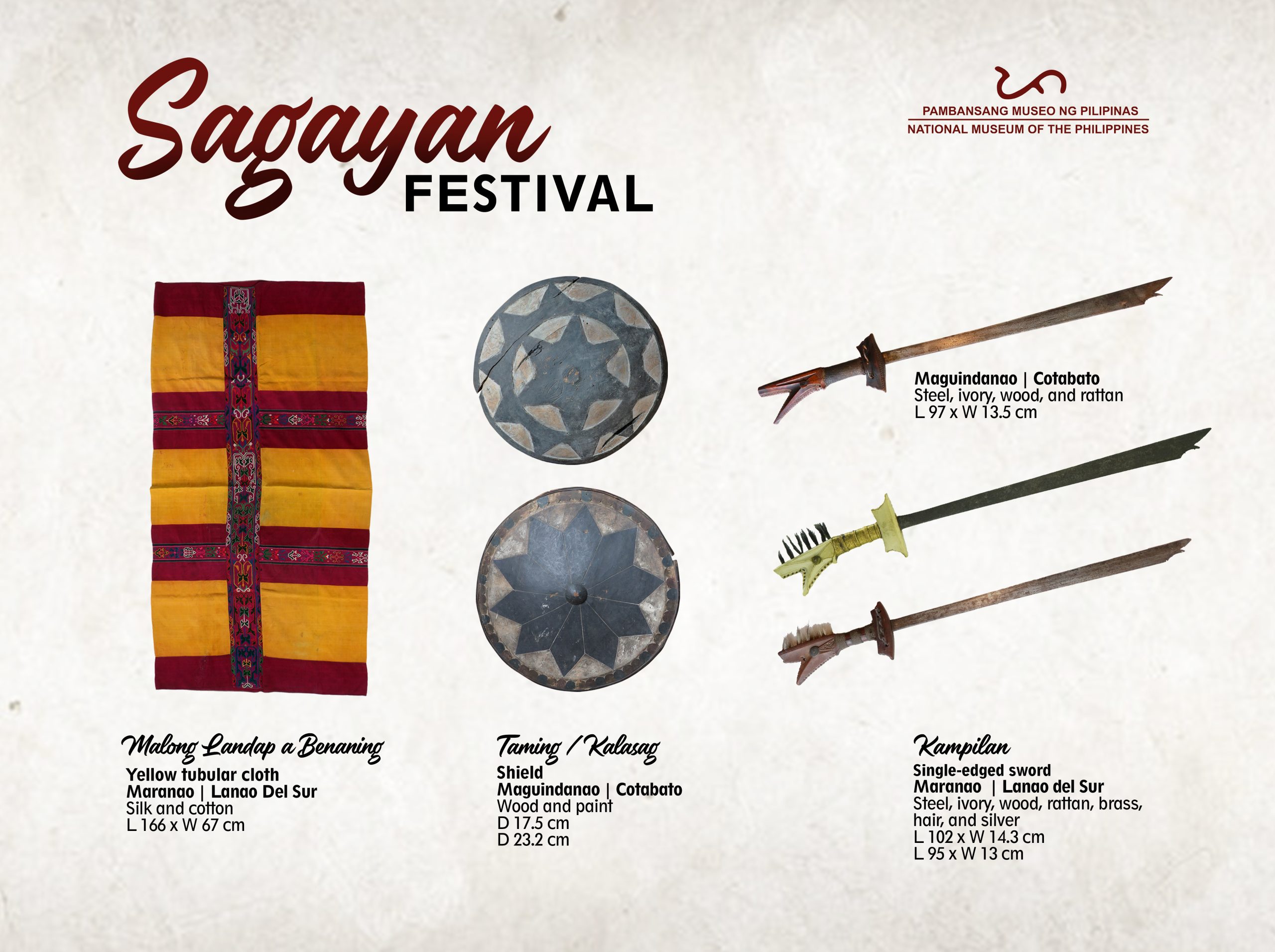SAGAYAN FESTIVAL
SAGAYAN FESTIVAL

For our #MuseumFromHome series, the #NationalMuseumPH features the Sagayan Festival celebrated by the peoples of Maguindanao and Maranao in the Lanao del Norte. This festival highlights the sagayan, a war dance depicting the adventures of Datu Bantugan in the Darangen epic.
The hero of the Darangen, Datu Bantugan, from the kingdom of Bumbaran, embarks on a quest to search for his younger sister Arcata Lawanen, who was abducted by Ayonan Dimasangkay of the kingdom of Sagorongan-a-Ragat. Sagayan, the war dance, ensues during the battle to rescue his sister from captivity. Despite the clash, the rift ultimately ends in the pacification and peace between the two kingdoms. Because of this, the people of Lanao del Norte consider this act beyond just being a war dance; it is a symbol for protecting communities, reconciliation, and promoting peace among folks.
 Prior to the first Sagayan Festival in 2010, the dance was usually performed during special celebrations among the Maguindanao and Maranao. Traditionally, the dancers of the sagayan wear a long-sleeved top, tiered bottoms, and a headpiece in bright colors, like golden yellow, orange, and red interspersed with earthy tones such as dark green and brown, and adorned with brass bells. They hold a kampilan, a single-edged sword used by Muslim groups in southern Philippines, and a klung (shield) as they dance to the rhythmic beats of the tagunggo or gong ensemble. The pulsing cadence of the music accompanying the dance is captured in the dance steps consisting of fast stomping, jumping, rolling, kicking, and a sweeping of the arms punctuated by an elegant curving movement of the hands.
Prior to the first Sagayan Festival in 2010, the dance was usually performed during special celebrations among the Maguindanao and Maranao. Traditionally, the dancers of the sagayan wear a long-sleeved top, tiered bottoms, and a headpiece in bright colors, like golden yellow, orange, and red interspersed with earthy tones such as dark green and brown, and adorned with brass bells. They hold a kampilan, a single-edged sword used by Muslim groups in southern Philippines, and a klung (shield) as they dance to the rhythmic beats of the tagunggo or gong ensemble. The pulsing cadence of the music accompanying the dance is captured in the dance steps consisting of fast stomping, jumping, rolling, kicking, and a sweeping of the arms punctuated by an elegant curving movement of the hands.
Today, the youth is involved in the showcase of the sagayan during festivals to represent their respective schools and compete with each other for the best performance. The yearly celebration has also effected several changes in the staging of the dance as performances are enriched by the use of other colorful props and backdrops of the environment in Lanao del Norte.
The rich cultural meanings and heritage embodied in the sagayan, through the dance, music, traditional clothing, bladed weapon, and epic literature, has led to its official adoption by the Province of Lanao del Norte as their cultural dance through a Sangguniang Bayan resolution in 1994.
Learn more about the rich material culture of the Maranao and Maguindanao in the Faith, Tradition, and Place: Bangsamoro Art in the National Ethnographic Collection, a permanent exhibition at the 3F of the National Museum of Anthropology in Manila.
Text by the NMP Ethnology Division
Photos courtesy of the Province of Lanao del Norte
© 2022 National Museum of the Philippines

















